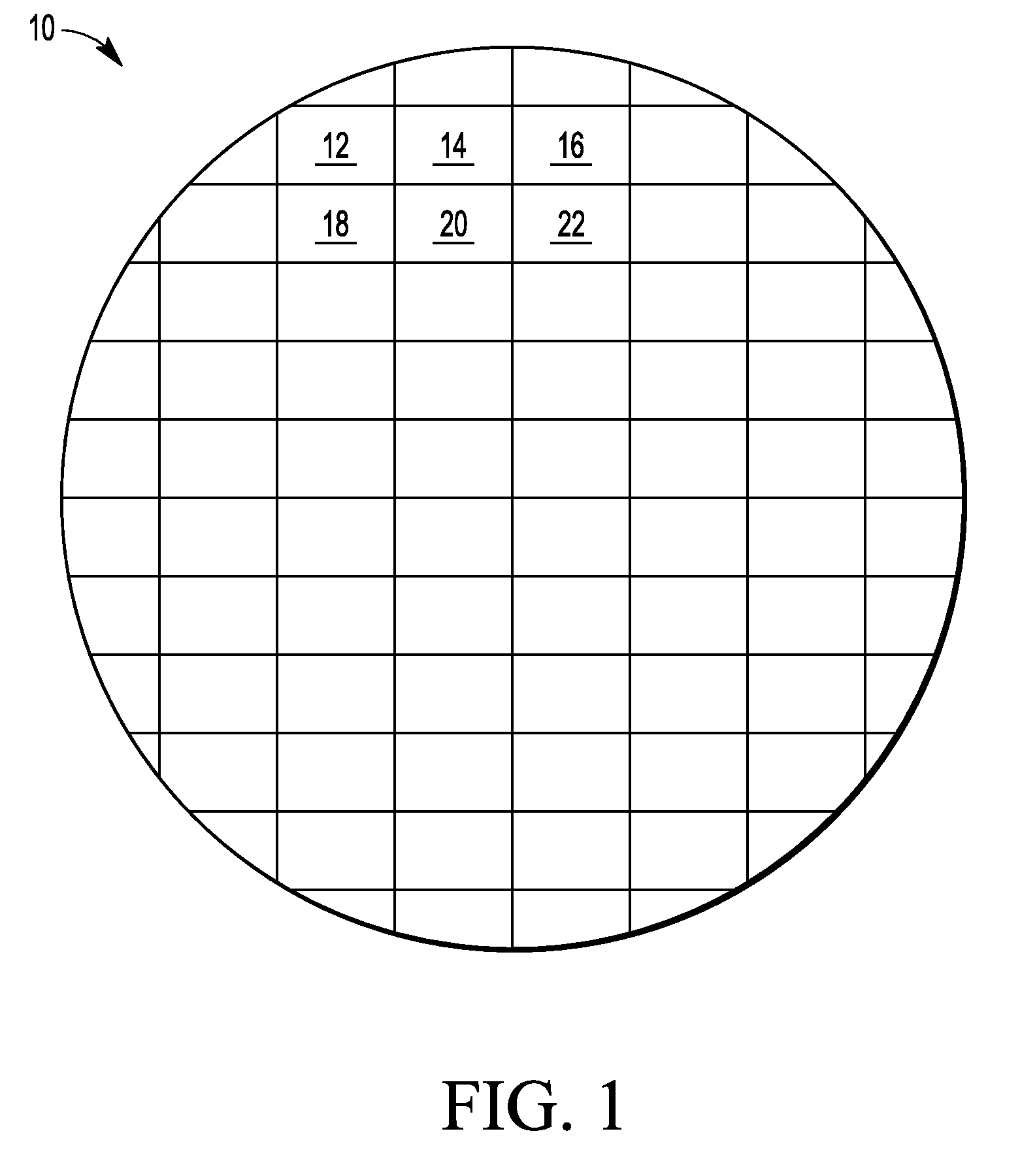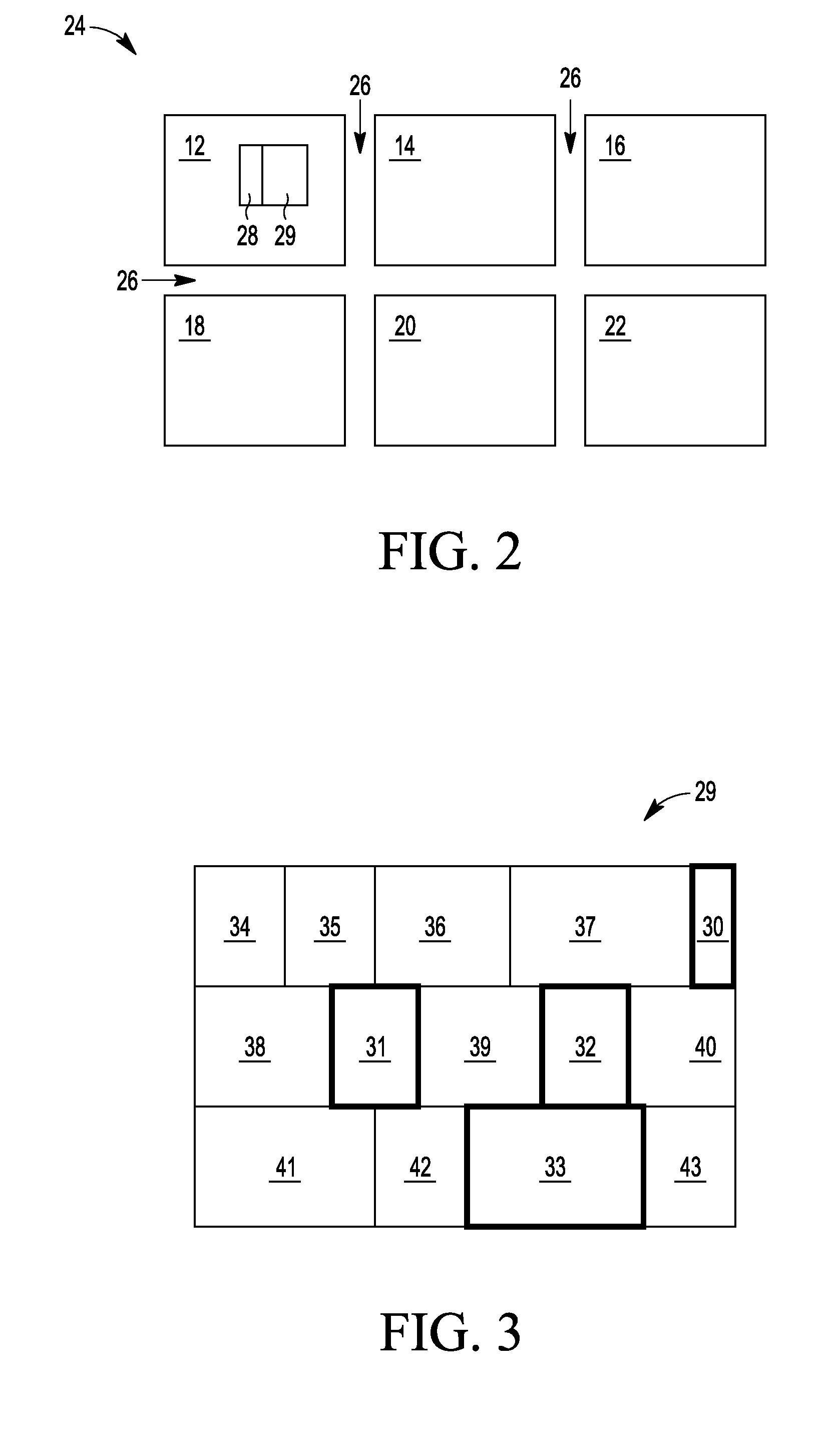Integrated circuit having a filler standard cell
a filler standard and integrated circuit technology, applied in the field of forming integrated circuits, can solve the problems of short time to market cycles that do not allow such testing, increase the complexity of integrated circuits, and reduce the time to market for these complex integrated circuits
- Summary
- Abstract
- Description
- Claims
- Application Information
AI Technical Summary
Problems solved by technology
Method used
Image
Examples
Embodiment Construction
[0011]Test devices can be formed in the streets on production wafers because they are not needed for the functioning of the integrated circuit and hence their destruction or removal during die singulation does not impact the integrated circuit. (An integrated circuit may also be referred to as a semiconductor device.) In other words, test devices can be formed in the area between die on wafers. However, the area of the street limits the number of test devices that can be formed in the streets. Test devices can be formed, instead or in addition to those in the streets, in standard blocks (e.g., filler standard cells) within die. In one embodiment, filler standard cells can be modified to include test devices. Filler standard cells are blocks that are added to the wafer to fill empty space so that there is a consistent density across the wafer. Among other things, this consistent density may be useful for chemical mechanical polishing uniformity. In addition, filler standard cells may...
PUM
 Login to View More
Login to View More Abstract
Description
Claims
Application Information
 Login to View More
Login to View More - R&D
- Intellectual Property
- Life Sciences
- Materials
- Tech Scout
- Unparalleled Data Quality
- Higher Quality Content
- 60% Fewer Hallucinations
Browse by: Latest US Patents, China's latest patents, Technical Efficacy Thesaurus, Application Domain, Technology Topic, Popular Technical Reports.
© 2025 PatSnap. All rights reserved.Legal|Privacy policy|Modern Slavery Act Transparency Statement|Sitemap|About US| Contact US: help@patsnap.com



